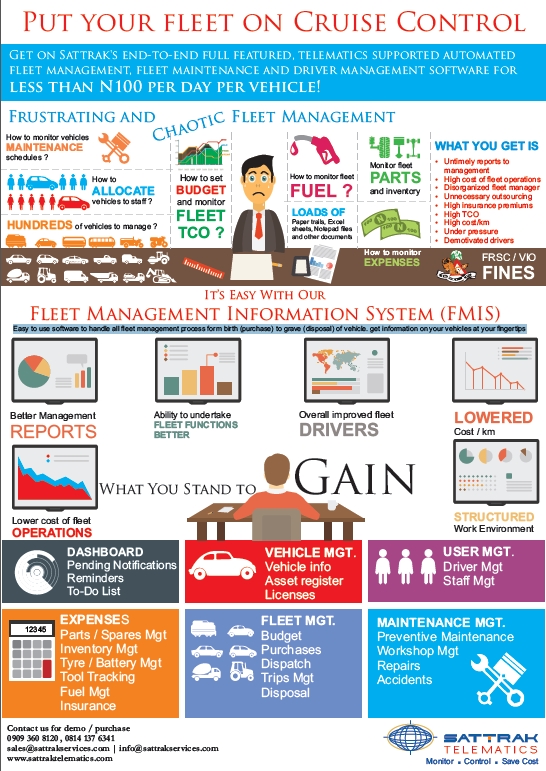Our collision avoidance solution is able to ‘interpret’ a scene in real-time and provide drivers with an immediate evaluation based on its analysis.
Advanced Driver Assistance Systems (ADAS)
The Advanced Driver Assistance System can give your company peace of mind by reducing collisions and accidents by fleet drivers.
THIS IS A SAFETY SOLUTION FOR COLLISION PREVENTION AND MITIGATION.
The system includes a smart camera located on the front windshield inside the vehicle.
It uses inputs from a single smart camera, mounted on the vehicle’s windshield. It provides the driver with critical real-time audio and visual warnings of unintended lane departures, imminent collisions, pedestrians, bicyclist and motorcyclists on the road and also has the ability to intelligently control high beams and recognizes various traffic signs.
Already adopted by fleets around the world, it improves driving safety and helps protect your bottom line by reducing collision-related costs.
Lane Detection
The lane detection algorithm (LDA) of the Advanced Driver Assistance System detects the driving lane boundaries and estimates the geometry of the lane in the 3D world coordinates relative to the vehicle. The LDA supports various applications:
- Lane departure warning – issue a warning when the vehicle is veering off the lane unintentionally, i.e. without signaling.
- Lane keeping assist – when the vehicle is veering off the lane unintentionally, apply a steering torque to prevent the vehicle from exiting the lane.
- Lane centering – continuously control the steering wheel to keep the vehicle in the lane center.
This application is a crucial component in autonomous driving systems. Additionally, LDA provides a backbone for supporting many other features functions, such as Vehicle Detection, in which case it assists in correctly estimating the vehicle position in the lanes ahead.
Vehicle Detection
Running on a mono-camera the Vehicle Detection (VD) algorithms of the Advanced Driver Assistance System recognize all motorized vehicles such as cars, motorcycles and trucks, in day and night time conditions (as a stand alone vision system) and was developed and tested on many tens of thousands of hours of driving from all around the world by global vehicle makers and accurately estimates the range to the preceding vehicle, comparably to radar based vehicle detection.
Vehicle Detection provides the core detection for multiple functions –such as Forward Collision Warning & pre-crash mitigation, Headway Monitoring & Warning and from 2013 Adaptive Cruise Control (ACC) which will be launched at one of the best know luxury vehicle makers globally.
- Forward Collision Warning (FCW)
- Urban Forward Collision Warning (uFCW)
- Headway Monitoring and Warning (HMW)
- Vision Only Adaptive Cruise Control (V.O. ACC)
- Collision Mitigation by Braking
The VD2 Vehicle Detection system, based on the EyeQ2 processor, acquires new targets up to 100 meters or more with a VGA resolution imager, and tracks them beyond this. The system also detects vehicles down to zero speed for Traffic Jam Assist functionality and automatic emergency braking (AEB) or low speed Forward Collision Warning systems . VD2 enhances vehicle detection performance in all aspects, and will enable features such as Adaptive Cruise Control to move to vision based sensing. Future use of automotive qualified high resolution imagers (to beyond 1MP) will allow new targets to be detected up to 200 meters. This will allow further enhancement of all functionality.
The second generation VD2 Vision-only Vehicle Detection system currently detects as follows:
- New vehicles at a distance of 100 meters when using a camera with a Field Of View (Fov) of 38 deg with
640×480 pixels. - The detection distance is scale-able with the resolution and FoV, so using higher resolution sensors would lead to a detection range of up to 200 meters.
- Built in fail-safe mechanisms ensure that the system will become ‘non-available’ when conditions do not allow required performance, for example in cases of heavy fog, extreme weather or camera blockage.
- System availability was tested in multiple production programs and proved to be rated at over 99%, and is therefore comparable to other sensing systems such as radar.
- The Vision-only vehicle detection provides accurate measurements of range, range rate, lateral position & rate which allows vehicle control functions to be derived. Range and range rate measurements are comparable to a radar signal, and positioning accuracy is sub-pixel.
- Vehicle detection utilizes lane detection information and image information to provide a very accurate target selection for threat assessment and control, and for collision mitigation by maneuvering.
- Vehicle detection provides an early detection for vehicle cut-in based on optic flow analysis to allow smoother and faster control in all applications.
Radar Vision Fusion
The Advanced Driver Assistance System has a radar-vision fusion that provides Collision Mitigation by Braking functionality.
Where a collision is imminent and the driver has not reacted, the vehicle detection algorithms, supporting the radar system, provide the vehicle robust validated data which allows the radar-vision fusion system to pre-activate other vehicle systems to derive multiple potential functionality’s.
The radar-vision fusion system can autonomously brake up to 0.3g (30% of full braking force) and perform full emergency braking upon driver confirmation via the brake pedal.
Pedestrian Detection
Pedestrians are the most vulnerable road users, whilst also being the most difficult to observe both in day and in night conditions. Pedestrians in the vehicle path or walking into the vehicle path are in danger of being hit causing severe injury both to the pedestrian and potentially also to the vehicle occupants. The Advanced Driver Assistance System helps prevent collision with passengers
General Object Detection
In the Vehicle and Pedestrian detection systems, it uses a classic approach of Model based detection where a “typical set of models” (depending on what is being detected) is employed. These models contain sets of standardized models, for example in pedestrians arms, legs, head and torso. Feature classifiers are then used and the system is trained by a process of statistical learning.
When moving to Any Object detection, the world is a far more complex place, as effectively the desire is to detect any object that may represent a threat to the host vehicle, or may be threatened by the host vehicle. Essentially this can mean any object in the camera’s Field of View. Depending on camera image resolution, ranges will vary, but it aims to detect general objects initially to a range of 30-40 meters and predominantly in urban scenarios.
Traffic Sign Detection
Traffic Sign Recognition (TSR) is a driver support function which can be used to notify and warn the driver which restrictions may be effective on the current stretch of road. Examples for such regulations are ‘speed limit zones’ or ‘no-overtaking’ indications. The system can help the driver to maintain a legal speed, obey local traffic instructions, or urban restrictions.
The system recognizes and interprets various traffic signs, both fixed signs on the road side and variable LED signs overhead, using vision-only information and therefore signs which may be obscured by other vehicles or trees may not be recognized.


